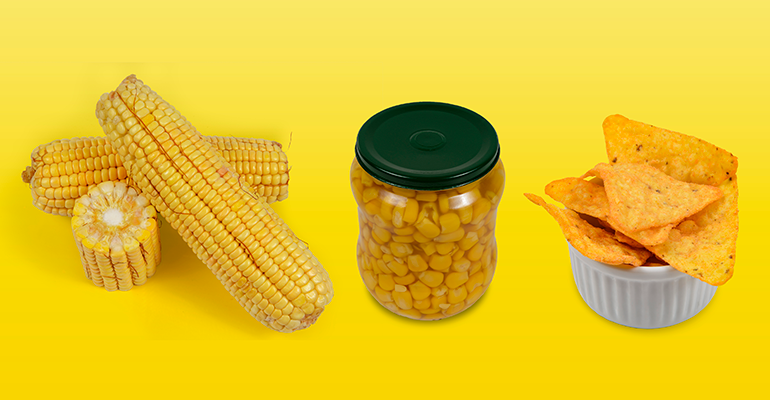News
Most US consumers still confused about ultra-processed food
15 Aug 2024Despite growing consumer awareness – and concern – about ultra-processed foods (UPFs), a significant gap persists between knowledge and perceptions of the category. Recent research shows that many US consumers cannot correctly identify UPF products and vastly underestimate their consumption of these foods.

Discrepancies in self-reported consumption
A recent survey by Innova Markets, presented at the Institute of Food Technologists (IFT) First in Chicago last month, reveals that nearly 30% of US consumers believe they consume UPFs less than once a week or never, while over half of consumers say they eat UPFs between one and six times a week. However, studies looking at actual UPF intake show that these foods constitute about 58% of the average US diet, which implies a stark discrepancy between perceived and actual intake.
When Innova asked consumers about the kinds of food they considered ultra-processed, the picture that emerged was closer to the traditional notion of ‘junk food’ than the classification of UPFs, as used in scientific literature. Under the NOVA system – created in 2010 when Brazilian researchers classified food and beverages according to their degree of processing – UPFs, considered as ‘category 4’ on the scale, comprise snacks, drinks, ready meals, and other product types largely or entirely formulated by substances extracted from or derived from food constituents.
What even is a hot dog?
There is some overlap between the popular and scientific interpretation of the term; when prompted to suggest types of UPFs, consumers mentioned foods that contain a lot of additives and synthetic artificial ingredients, which do fall under category 4 of the NOVA system. Consumers also pointed to any foods high in sugar, fat, salt, and calories. Examples of frequently cited UPFs included ready meals, cakes, pastries, sweet goods, and sugar confectionery. Fish and seafood and meat and poultry products were not often mentioned – even though many products in those categories on supermarket shelves do fall under the UPF category.
A recent consumer trends survey by Coefficient Capital also sheds light on the public's understanding and misunderstandings about food processing. The survey asked a panel of 2,360 US consumers to classify six products as either processed, unprocessed, or ultra-processed. Results show that consumers often do recognise unprocessed food for what it is but have a hard time distinguishing UPF from processed food. For example, 88% of respondents correctly identified fresh apples as unprocessed, and 77% accurately categorised raw chicken as unprocessed. However, misconceptions were evident with products like baby carrots— where 75% of respondents incorrectly considered them unprocessed, despite the shaping and treatments they undergo, classifying them as processed.
When asked about UPF products, hot dogs were correctly identified by a small majority (52%) as ultra-processed, but 43% misclassified them as merely processed, and 5% thought they were unprocessed. The misperceptions were especially glaring when it came to beverages. Energy drinks and protein shakes were very frequently misidentified. Despite both being ultra-processed, only 40% correctly identified energy drinks as such. And a large majority (63%) mistakenly thought protein shakes were merely processed, while only 16% were aware that these shakes are UPFs – less than 21% of respondents considered them to be entirely unprocessed.
Adding to the confusion is the fact that the scientific definition of UPF remains open to discussion and debate. As recently covered on Ingredients Network, this has also complicated the ability of policymakers to implement UPF regulation.
Decision-making at the shelf
Innova’s research shows that most consumers consider the ingredient list first, followed by nutrition information, and finally the product’s appearance to judge whether a food is ultra-processed. When shopping, one in five US consumers actively tries to limit artificial ingredients, associating them with high UPF content. Commonly avoided ingredients include artificial flavours, sweeteners, preservatives, colours, and stabilisers. Health risks are a major concern, with nearly 50% believing that UPFs are detrimental to health, driven by fears of poor nutritional quality and artificial additives.
Innova's research further indicates that many consumers are interested in stricter regulation. More than half (52%) of Baby Boomers and about a third (34%) of Gen Z agree that UPFs have insufficient regulations. Additionally, over 50% of Gen Z and Millennials, and over 60% of Gen X and Baby Boomers, believe a scoring system for classifying UPFs would be useful.
Opportunities for innovation and reformulation
Consumer concerns about UPFs offer opportunities for innovation. Balancing taste and affordability with fresh, natural ingredients can enhance product appeal. For instance, vegetable kebabs emphasising their wholesome content can help build trust. Reformulating products to reduce or eliminate artificial ingredients is also crucial.
Transparent communication about ingredient quality and processing methods is essential. Lu Ann Williams, global insights director at Innova Market Insights, explains: "More than half of consumers only want to consume products where they understand the ingredients list. Reducing or eliminating artificial ingredients can help address concerns about ultra-processed foods."
Related news

Value is a top priority for today’s F&B consumers
3 Apr 2025
Research from global consultancy Hartman Group suggests there are six core values that brands must tap into to connect with consumers’ needs.
Read more
Make plant-based meat ‘tastier and more affordable’ to fight climate change
31 Mar 2025
The UK’s Climate Change Committee is calling for tastier, more affordable plant-based meat offerings as part of measures to counteract the nation’s environmental impact.
Read more
Clean-label cereals prompt fortification debate
28 Mar 2025
Marks & Spencer has caused a stir with the launch of a range of breakfast cereals in the UK containing minimal ingredients.
Read more
UK consumers could be eating cultivated meat within two years
26 Mar 2025
Cell-cultivated products (CCPs), from chicken nuggets to beefburgers, could be on UK supermarket shelves by 2027 after regulators launched a sandbox to accelerate approvals.
Read more
Future F&B flavours favour exploration and explosive taste profiles
25 Mar 2025
Exploration and experimentation will define the future of flavour, according to Mintel, as consumers seek out taste profiles and textures that offer an adventurous eating experience.
Read more
‘Health’ labels on products reduce consumers’ willingness to pay
10 Mar 2025
A study into front-of-packaging “health” labelling finds that these labels alone can lower US consumers’ willingness to pay.
Read more
Food industry lags on healthier product formulation, nutrition index finds
7 Mar 2025
The world’s biggest food manufacturers derive just 34% of their sales from healthier products, according to the 2024 Global Access to Nutrition Index.
Read more
Does calorie labelling lead to reduced consumption?
27 Feb 2025
Calorie labelling of food products leads to a small, but consistent, reduction in the number of calories consumed, a study suggests.
Read more
F&B industry hit with fresh greenwashing claims
26 Feb 2025
The food and beverage (F&B) industry is under fresh scrutiny amid claims of greenwashing, with Arla the latest company in the firing line.
Read more
Have scientists discovered a new tool to measure UPFs?
19 Feb 2025
Researchers have developed a new scoring system and database, compiling over 50,000 food items, of which over 1,000 are classified as ultra-processed.
Read more